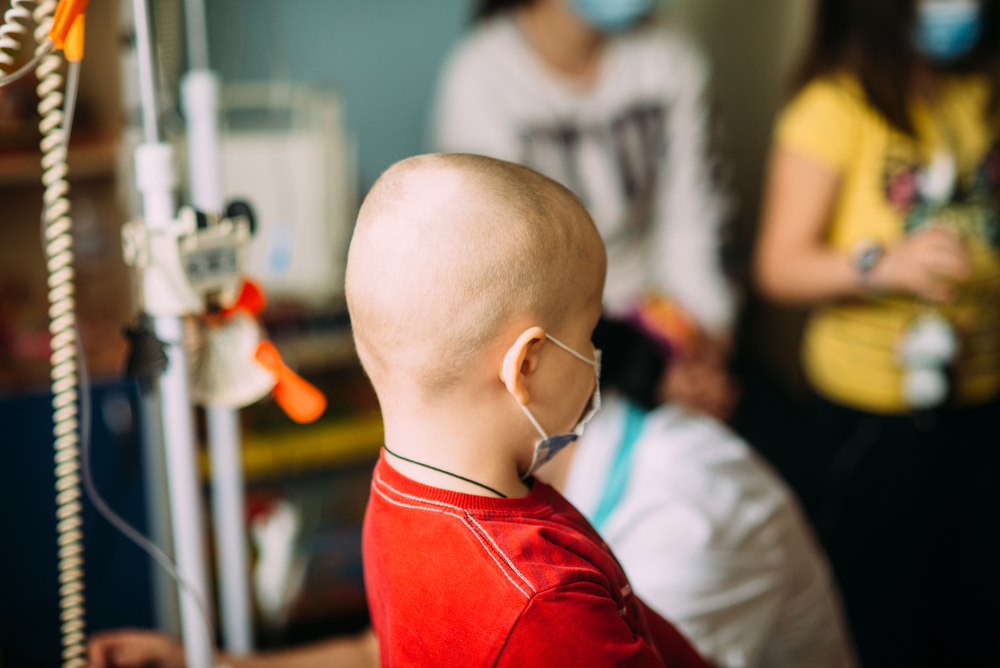Over the last 20 years, the US Food and Drug Administration (FDA) has put considerable effort into promoting pediatric drug development. The 1997 FDA Modernization Act (FDAMA) laid the groundwork for six months of market exclusivity for voluntary pediatric assessments provided by the Best Pharmaceuticals for Children Act (BPCA) which was passed into law in 2002. Similarly, the 1998 Pediatric Rule and later the Pediatric Research Equity Act (PREA) which was passed in 2003, mandated pediatric studies for any new indication, dosage form, dosing regimen, route of administration or new active ingredient, unless an exemption of this requirement was provided. The BPCA and PREA legislations, both reauthorized in 2007 and then made permanent in 2012, have led to over 770 labelling changes for pediatric use. Prior to the introduction of pediatric regulations, only about 20 percent of approved drugs were appropriately labelled for pediatric use.
While these initiatives have been reasonably effective in promoting pediatric development for many therapeutic areas, the results in pediatric oncology have been less obvious. In fact, prior to the FDAMA, only 15 approvals or label changes for pediatric use occurred over a 45-year span. Following the introduction of FDAMA, there have been over 25 approvals and labelling updates for pediatric cancer drugs.

The difficulty in pediatric oncology drug development is attributed to a combination of factors. Many pediatric cancers are rare and development strategies are not always viewed as profitable, therefore sponsors might be hesitant to pursue these research programs. Furthermore, pediatric development programs are risky and challenging, from both a logistics and operations perspective. Lastly, safety profiles in children may be difficult to predict and could differ from adults — they may be amplified, absent or completely unique — therefore, adequate safety assessments and monitoring will need to be implemented.
In an effort to address this hurdle in pediatric oncology drug development, the FDA established the Research to Accelerate Cures and Equity (RACE) for Children Act. It was enacted as part of the FDA Reauthorization Act on August 18, 2017 and will impact marketing authorizations planning to be submitted after August 18, 2020. With the implementation of the RACE for Children Act, sponsors can anticipate considerable changes in their clinical development plans with respect to pediatric assessments within their oncology portfolio.
In a recent webinar, Medpace’s Director of Regulatory Affairs David Horton and Lead Advanced Clinical Practitioner Peggy Kaiser explored the regulatory and trial design implications of the RACE for Children Act. David Horton is a subject matter expert in pharmaceutical drug development and nonclinical regulatory strategy with over 16 years of research and drug development experience in academic, government (NIH), pharmaceutical industry and CRO settings. Peggy Kaiser has over 30 years of experience in pediatric hematology/oncology nursing and pediatric clinical research, with notable expertise in trial development for investigational products which include gene and cellular therapies. To learn more about how pediatric oncology drug development will change with the RACE for Children Act, watch this on-demand webinar from Medpace, a global clinical contract research organization.
The RACE for Children Act
The purpose of the RACE for Children Act is to require pediatric assessment of drugs and biologics that are intended for the treatment of cancers and directed at molecular targets that are substantially relevant to the growth or progression of a pediatric cancer. Additionally, it eliminates the orphan exemption (submissions with Orphan Drug Designation) for pediatric studies for therapies that are directed at relevant molecular targets.
Why now? There has been a wealth of research that shows there are still drugs for adults that haven’t been tested in children despite growing evidence that a lot of these targets could have beneficial effects in pediatric cancers.
“I think this comes from the advancement of precision cancer medicine and an increase our understanding of cancer etiology and the underlying genomic factors that are involved in some cancers,” says Horton.
Molecular Target Lists
With the requirement for pediatric assessments for therapies going after substantially relevant molecular targets, considerable efforts have been made to identify targets of interest. Based on published peer-reviewed literature, abstracts and public databases, the FDA, National Cancer Institute and the greater pediatric research community created a list of molecular targets that are relevant to pediatric cancer. According to the Oncology Center of Excellence Pediatric Oncology Program, the list includes “molecular targets for which existing evidence and/or biologic rationale exists to determine their potential relevance to the growth or progression of one or more pediatric cancers.”
This list features over 200 molecular targets, including targets involving gene abnormalities, cell lineage determinants, as well as targets involved in the immune system and tumor microenvironment. Additionally, there are a few targets listed that are considered not relevant for pediatric oncology and thus are eligible for automatic waivers to forego pediatric assessments.
“It’s interesting to note that the list of non-relevant targets was a bit larger when it first came out, however, with an increased understanding of the role of these targets through public discussion, the list has shrunken quite a bit.,” remarks Horton.
However, just because the target is not on the list, doesn’t mean that studies don’t have to be completed, he adds. Similarly, waivers can be granted even if the targets are on the list.
Waivers may be considered for situations where considerable evidence suggests that a drug may cause significant adverse effects in the child or affect a child’s development, or if additional pediatric assessments may not provide additional substantial information to the understanding of the efficacy, safety or pharmacokinetics of the drug.
“These substantially relevant molecular targets are based on totality of the evidence and these lists are updated on a regular basis,” says Horton. “There are semiannual public workshops to discuss how targets are coming on and off the list.”
Pediatric Assessments
To fulfil the requirement to conduct pediatric studies for relevant therapies, sponsors will need to implement pediatric assessments that generate “clinically meaningful study data.” In developing these assessments, sponsors should consider the following:
- Are you taking into consideration all of your preclinical data to inform on your study design?
- Do you have the appropriate formulation developed for pediatric use?
- Do you have the appropriate starting dose and dosing regimen for the intended pediatric patient population?
- Are you using the extrapolation approaches laid out in the regulatory guidance to inform on the proposed doses?
- Are you considering all the variability in the physiological characteristics between adults and children?
- Do you have the right pharmacodynamic endpoints and biomarkers selected?
- Are you leveraging the adult safety and efficacy data to inform on the trial design?
Operational Considerations
With the RACE for Children Act, sponsors will need to undergo a paradigm shift when it comes to designing their overall drug development program. The key is to familiarize yourself with regulations that concern pediatric populations and to consider the multitude of factors that affect clinical operations early on.
“Studies on children are really quite distinct from those in adults as children are legally protected as a vulnerable population,” explains Kaiser. “As such, studies involving children require special considerations. There are medical and regulatory issues that are different when children are involved, since there is the potential for impacting the child’s physical and cognitive growth and development.”
For these reasons, pediatric oncologists and pediatric Institutional Review Boards (IRBs) are more conservative when it comes to conducting clinical studies in children versus adults.
Consent, Assent & Re-Consent
One of the main differences in conducting pediatric studies is obtaining informed consent. Informed consent is usually given by a parent, a legally appointed guardian or a court of law if the child is a ward of the court. In addition, children at a certain age are required to give affirmative agreement to participate in research (assent). The age of assent is usually determined by the IRB but typically starts at age seven.

“Something to consider is that you’ll have multiple assent documents depending on the age in which your inclusion criteria are defined, so assent documents will need to be written in age-appropriate language, and a separate assent will be required for all of those age groups as defined by the IRB,” says Kaiser.
Re-consent should also be considered when children reach legal age and continue to participate in a study. Re-consent also applies to individuals who are not participating but whose previously collected samples are being utilized or their medical records are continuing to be reviewed.
“Consent, assent and reconsent should always be part of the site training for the pediatric cancer studies,” Kaiser advises.
Design Considerations
As with adult studies, sponsors are encouraged to develop a practical protocol that will optimize successful completion of a pediatric study. However, sponsors may want to consider adaptive trial designs and multiple study sites to account for the small number of eligible participants. Each site should have dedicated pediatric cancer units and staff, led by an experienced key opinion leader.
“Enthusiasm for the trial will go a really long way and spread across the other sites,” adds Kaiser.

Depending on the study, sponsors may want to recruit children of different age groups. Children will undergo substantial physiological and cognitive changes as they grow, which may affect drug metabolism and the choice of assessments.
Unique to adolescent populations is the onset of sexual maturation, which leads to physical and behavioral changes. Sensitive issues such as sexual activity and illegal substance use may need to be discussed and accounted for in a study protocol.
Recruitment & Retention
Kaiser emphasizes that recruitment and retention is a family affair: parents are recruited first, but often, grandparents, extended family members and friends may want to be involved. In fact, Kaiser recommends that sponsors prepare informational fliers that parents can take home.
Family support is another key factor in pediatric oncology studies. Support may take the form of:
- Concierge services to ease the burden of travel
- Meal tickets as a courtesy
- Gaming or movie devices for patients and siblings
- Flexible scheduling to accommodate for parent, patient and sibling schedules
Other stakeholders who may be involved in a parent or legal guardian’s decision-making include healthcare providers and members of the community.
“What’s unique to pediatric cancer research is that parents very much rely on the oncology staff for their expertise and advice,” says Kaiser. “Don’t leave out the community, because community groups such as disease advocacy groups and a patient’s faith community are strong influences in pediatric cancer and they provide support to the families.”
In summary, the recommendations are to cast a wider net for engagement. This involves early preparation to ensure all materials are prepared for IRB submission and all support services are accessible to families. Finally, keeping parents and sites updated on the trial’s progress is a proven strategy for increased patient retention.
Considerations Unique to Children
Pediatric studies call for unique assessments that account for a child’s physical growth, as well as cognitive and psychosocial development. Weight and height measurement at each visit to follow growth curves, baseline organ function, neuropsychological testing, plus school performance and attendance are among the list of unique assessments for children.
“One thing to seriously consider is the measures needed for sexual maturation, especially for the those that are adolescents,” notes Kaiser. “These will mainly involve hormonal markers of puberty but also will involve the physical signs assessed by Tanner staging.”
Sponsors can maximize their chances for IRB approval by selecting assessments and procedures that are closely aligned with standard of care.
“If a test has more than minimal risk and provides no anticipated benefit, it won’t be approved by the IRB,” cautions Kaiser.
In adult studies, procedures such as Magnetic Resonance Imaging (MRI), urine collection and blood draws are fairly straightforward. In pediatric studies, sponsors need to consider general anesthesia or sedation for imaging procedures and age-appropriate urine collection methods such as using pediatric urine collection bags or placing cotton balls in a diaper. For blood collection, the number and volume of blood draws should be minimized. Sponsors are encouraged to provide topical anesthetics to minimize discomfort, pain or emotional distress.
Another consideration is drug formulation and schedule of administration. Kaiser urges sponsors to design age-appropriate dosage forms such as suspensions, liquids or chewable tablets to promote medication adherence. These factors may influence the bioavailability and stability of the active ingredient. In addition, it will be important to have information to support use of nasogastric tube or gastric tube administration early on in the development of oral drugs for pediatric cancer.
“Something that you don’t have to think about with adults is, do you need to give this at school? If so, there may be some additional paperwork that will need to be processed for school administration of investigational products.”
Ultimately, it is critical for sponsors to design a protocol that’s specific for pediatric populations, as opposed to “reworking an adult protocol.”
Historically, the widespread off-label use of treatments in pediatrics was necessary, providing the clinician with the difficult choice to prescribe a child with a drug that’s only been studied and indicated for adults or to not prescribe a drug at all. The decision rested on the clinician’s aptitude for prescribing the right therapeutic dose, sometimes without appropriate data, potentially leading to ineffective results or placing a patient at risk.
Both Horton and Kaiser say that early planning will be key to success.
“The FDA encourages early meeting with sponsors to develop the right approach and strategy for these pediatric assessments” says Horton.
“Involve your pediatric cancer experts and your other stakeholders, including parents and patients, when designing the study protocol,” Kaiser says. “Align your protocol assessments with the standard of care as much as possible — it’s really going to help keep your budget down and it will help get it through the IRB.”
Horton concludes, “The goal of the RACE for Children Act is to promote the access to and advancement of much needed cancer therapies for children. The focus is not just to increase the number of pediatric studies, but rather, accelerate the appropriate and timely pediatric evaluation of potentially promising therapies.”
To gain more insights, click here to watch “The RACE for Children Act Will Change the Landscape for Pediatric Cancer Research: Are you ready for August 2020?” by Medpace.
This article was created in collaboration with the sponsoring company and the Xtalks editorial team.












Join or login to leave a comment
JOIN LOGIN